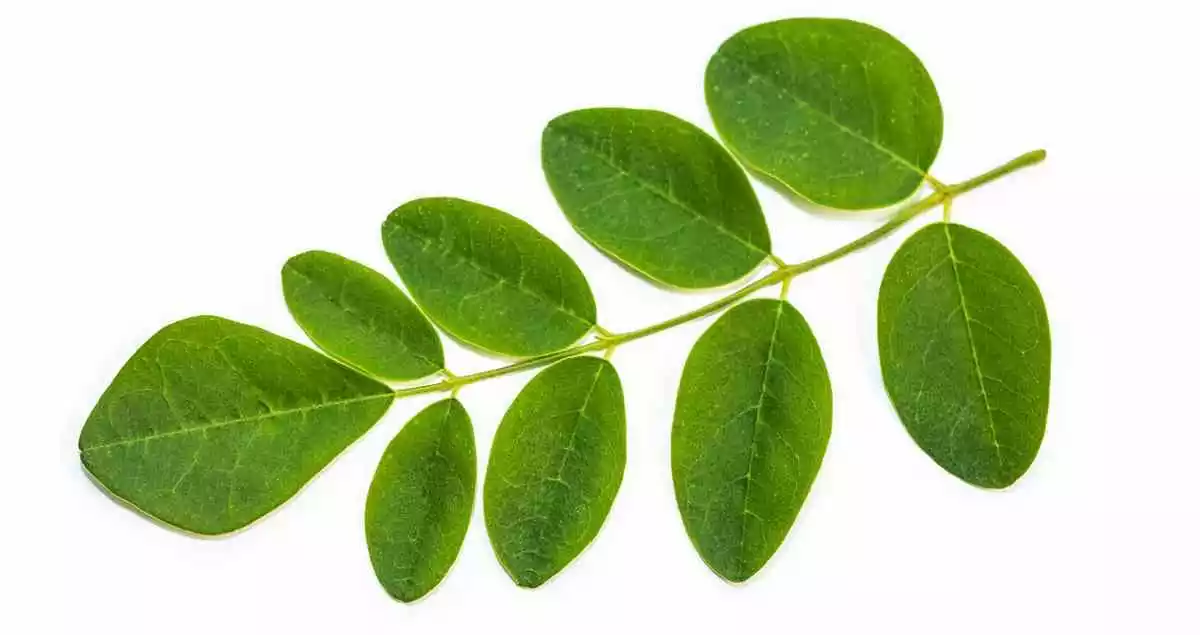
Known with the scientific name of Moringa oleifera, the moringa is a type of tree that originally comes from the North of India. This plant has become increasingly more popular over the last years given the increase in the number of people who often consume their flowers for the different benefits that supposedly they have for the human organism.
Some specialists have considered the moringa as the ‘miracle tree.’ Although it effectively seems to contribute with interesting energetic, nutritional and medicinal benefits, it’s not free from risks and it has certain contraindications.
In this article, we set out exactly what the moringa is, what it is for, what benefits and properties it contributes with, how to take it and what its main contraindications are.
What's the moringa?
As we were telling you at the beginning of this article, the moringa is a type of tree that belongs to the family of the moringaceae, scientifically called Moringa oleifera. It’s also known by the name of ben, whereas in Latin America its most correct term is the marango.
It’s original and characteristic from India (specifically from the North of the country), although it’s got the added advantage that it can grow in any type of soil, which explains why we may find it in other places in the world, as it is the case of Africa.
The moringa tree may reach the height of 10 to 12 meters. Their leaves are compound, with characteristic flowers that are truly eye-catching since they have elongated off-white petals with yellow stamen and big fruits.
Although its consumption goes many centuries back, when their blooms, fruits, bark and timber were consumed by part of the local population with a view to meeting their nutritional needs, nowadays the moringa has become so popular for its various both preventive and medicinal properties that it is possible to easily find the moringa in dietetic shops, herbalists and even supermarkets.
However, although from the nutritive point of view fruits and flowers are the most important parts of the tree consumed, from a medicinal point of view the most common is to use moringa leaves and moringa seeds.
Active ingredients and nutrients
As we were telling you above, one of the main properties of the moringa is its nutritive richness, and, above all, its contribution with a large quantity of active ingredients and other compounds. Among these the following must be singled out:
- Unsaturated fatty acids: Moringa’s seeds are particularly rich in oleic acid.
- Vitamins: in particular vitamin C (ascorbic acid), A, E, and vitamins from group B.
- Mineral salts: such as calcium, zinc, iron, potassium and magnesium.
- Proteins and amino acids: Moringa contains around 18 essential amino acids. Moreover, both its fruits and seeds contain around 60% of its weigh in proteins.
- Other active ingredients: these include flavonoids, quercetina, antioxidant-strong rutin, kaempferol) polyphenols (of antioxidant action), and (antioxidant and anti-inflammatory) chlorogenic acid.
Moringa benefits and properties
1. Good to look after your cardiovascular health
Given its rich content in antioxidants, the moringa helps to look after your cardiovascular health in a completely natural way, which means that its consumption can positively help to keep down your LDL cholesterol levels in the blood (also known as ‘bad cholesterol’).
In the long-run, the moringa could help to prevent cardiovascular accidents, which are considered as the first cause of death in the West and whose impact is dangerously on the rise.
2. Interesting in the case of diabetes
Some scientific studies have signaled moringa’s qualities to reduce the high sugar levels both in blood and urine, which renders its regular consumption a way to improve not only the glucose levels, but also protein and hemoglobin in people with diabetes.
Moreover, thanks to its anti-inflammatory properties, it seems that the moringa can become an interesting medical treatment for this chronic illness.
3. Anti-inflammatory qualities
The moringa contains certain active ingredients that have an anti-inflammatory effect, this being the reason why this tree has been used in the treatment of chronic conditions such as arthrosis or arthritis, which helps to revert the swelling of the tissues in an utterly natural manner.
Thanks to all these anti-inflammatory qualities, the moringa also helps to reduce the inflammation in the mucosa in the respiratory system, which renders this tree an interesting remedy in the case of respiratory allergies, asthma, rhinitis, bronchitis or laryngitis.
The moringa has indeed been used with a view to be combatting digestive, stomach, and intestinal swelling as it is the case of gastritis, gastroenteritis and ulcerative colitis.
4. A powerful antibacterial
Besides its anti-inflammatory qualities, did you know that the moringa is also an excellent antibacterial? That’s why traditionally its leaves (blended with other herbs) have been used in the natural treatment of bacterial infections such as salmonella, E. coli or Helicobacter pylori.
5. Moringa's other interesting qualities
However, the aforementioned properties aren’t the only ones that the moringa offers us. The moringa is also, with its restorative properties, a liver cell regenerator, thereby reducing hepatic inflammation.
The moringa is also a highly energetic plant, which means that it’s a very useful option when it comes to contributing to both vitality and energy. That’s why it’s useful for moments of fatigue or weakness, especially for sportspeople.
How to take the moringa?
If there are no contraindications that hamper the consumption of the moringa, there are several options that offer us the possibility to take it in order to enjoy its various qualities.
Moringa tea
Moringa tea is traditionally prepared with dry or fresh leaves and it’s common to take one or two cups a day. Taken this way, the moringa has anthelmintic (antiparasite), digestive and laxative properties.
Fresh moringa juice
The fresh moringa juice is made by grinding the fruits and leaves of the plant. It’s advisable not to drink more than a glass a day. It’s useful in the case of diabetes.
In capsules
The moringa in capsules is one of the most common options. We may easily find moringa capsules in herbalists and health food shops. Although the most suitable is to stick to the consumption recommendations as described on the package, the most common consumption pattern is to take three capsules a day, preferably before each meal.
What are moringa’s contraindications?
As it is the case in any medicinal plant or herb, and, broadly speaking, in any other nutritional supplement, the moringa is an option not free from certain contraindications that could hamper its consumption.
For instance, high doses of the plant could lead to miscarriage. It’s therefore, easy to understand that its consumption is not suitable for pregnant women (or if you believe you could be).
Since it’s a plant with hypoglycemic properties (which means that it helps to keep down the blood sugar levels), its consumption is not advisable for people that suffer from hypoglycemia.
It has a slight laxative property, so when it’s consumed for the first time in may cause diarrhea, with effects that should decrease and eventually disappear after few days.

